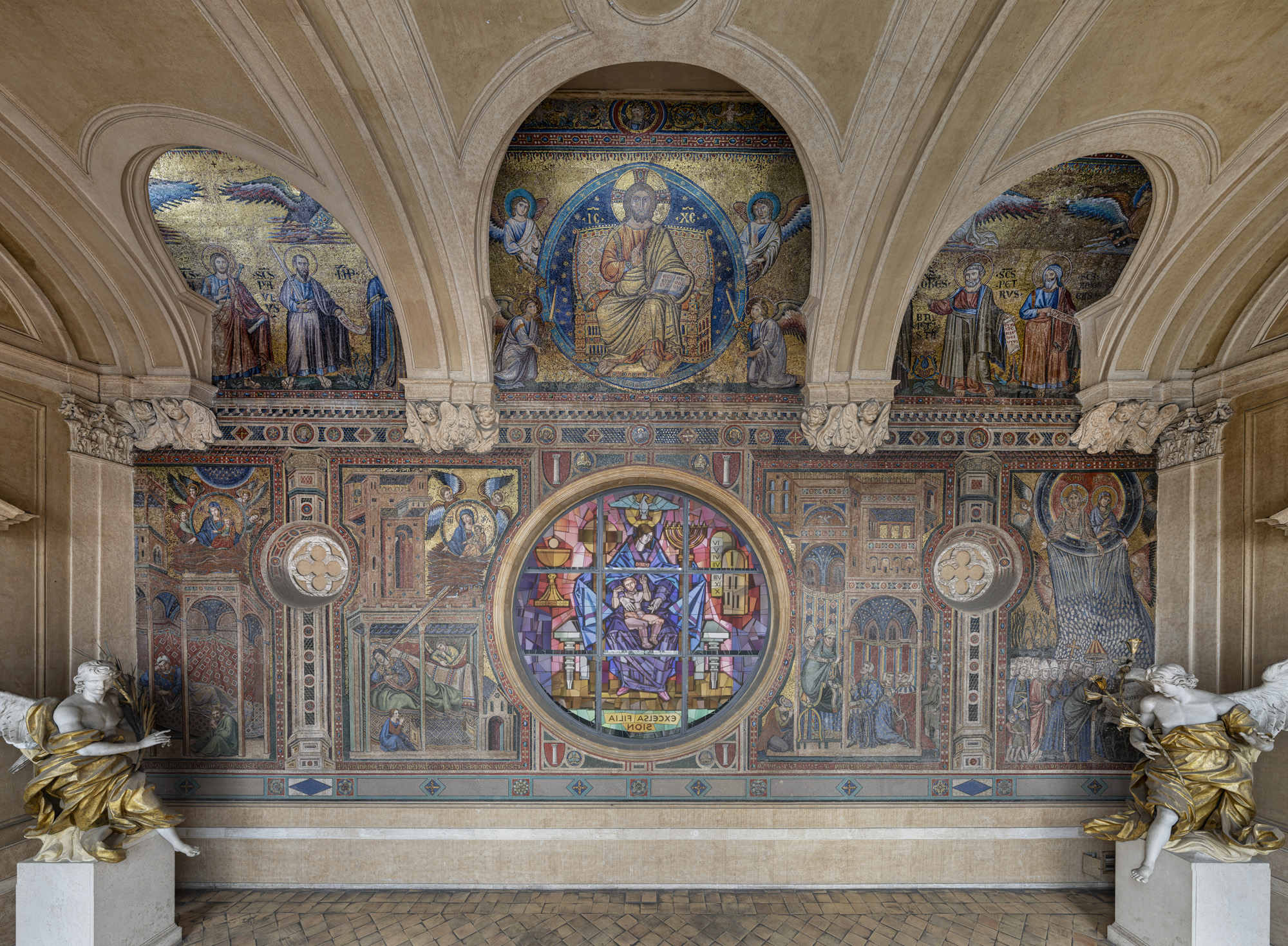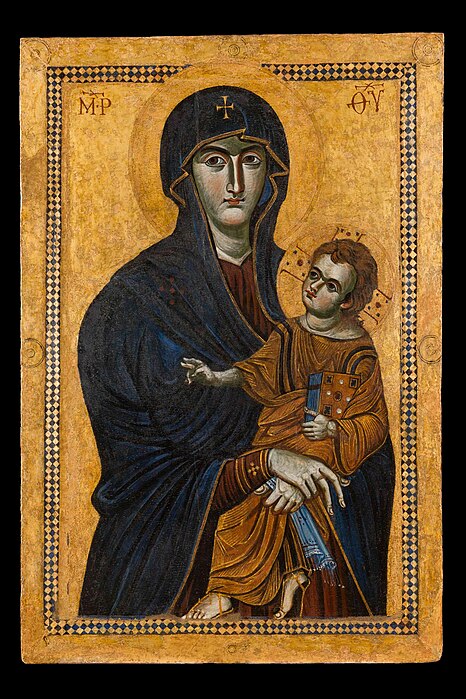Consecrated on August 5, 434, Santa Maria Maggiore (St. Mary Major) is the earliest Marian sanctuary in the West. It’s home to the Salus Populi Romani, the world’s most important Marian icon likely painted by St. Luke the Evangelist, and to a silver, gold and crystal reliquary containing parts of Jesus’ manger.
On December 8, 2001 Pope John Paul II inaugurated the Liberian Historical Museum of liturgical treasures here. Last December 11, two weeks before the start of 2025’s Jubilee, Cardinal Pietro Parolin, the Vatican’s Secretary of State, inaugurated this Museum’s new, little-publicized, wheelchair accessible wing.

Image: Courtesy of @Capitolo Santa Maria Maggiore
The new wing houses two superstar works-of-art. One is the “Loggia of the Blessings” added in 1743 and off-limits to the public until last December. On its wall, until then the Basilica’s façade, is a mosaic created just before the first Jubilee in 1300.
Its upper register depicts Christ Pantocrator flanked by several saints. Its lower register illustrates in four scenes the ancient legend illustrating the foundation of St. Mary Major during Pope Liberius’ pontificate (r. 352-366). In the first a childless Roman patrician couple are praying to the Virgin Mary promising to dispose their property in her honor if she will bless them with a child. The second shows Mary appearing to them in a dream and indicating where they should build a church in her honor. In the third the couple is recounting their dream to Pope Liberius, who tells them that he had the same dream: to build a church in the Virgin’s honor where, during the night before (August 4th), there’d been a snowfall-obviously a miraculous event during the summer. The last shows the couple and Pope Liberius at the site of the snowfall marking the new church’s perimeter. This is the first depiction of snow in art and explains why the Basilica was originally called “St. Mary Liberiana” and “St. Mary of the Snow”.

The other unicum is art history’s earliest crèche. The Tuscan artist Arnolfo di Cambio sculpted its marble figures in 1291, around the same time as the aforesaid mosaic.
Instead, the new wing’s highlights are several:-the so-called “Chasuble of St. Jerome”, a rare example of a medieval liturgical vestment. It and the remains of this Doctor of the Church, who lived in Bethlehem at the site of the Holy Crib, were moved in c. 1285 from Bethlehem to St. Mary Major, also called “Bethlehem of the West”.
Another is the bronze bell known as, “La Sperduta”, dating to Nicholas IV ‘s pontificate (r. 1288-1292), like the crèche. It tolled every night at 2 AM to help pilgrims orient themselves in the dark and continued to do so until 1884 when it was dismantled and housed until last December in Vatican City. The original gold-plated silver frame of the Salus Populi Romani, plus a reliquary containing St. Luke’s finger bones and many ex-voto offerings are also included in this trove. In addition there are magnificent jewels donated by popes to the icon for her intercession; as examples: by Pope Gregory XVI (r. 1831-1846) for saving the Romans from a cholera epidemic; in 1954 by Pius XII (r. 1939-58) for ending World War II; and, most recently, in 2023, the “golden rose” ornament by Pope Francis.
From this new wing it’s possible to reach the Basilica’s roof and then climb a spiral staircase in the dome for a panoramic view, also previously off-limits. Tickets to the Liberian Historical Museum and its new wing cost 7.50 euros and 3 euros more for the view. To book in advance: send an email to av.acilisab@mms.oesumetisiv.












